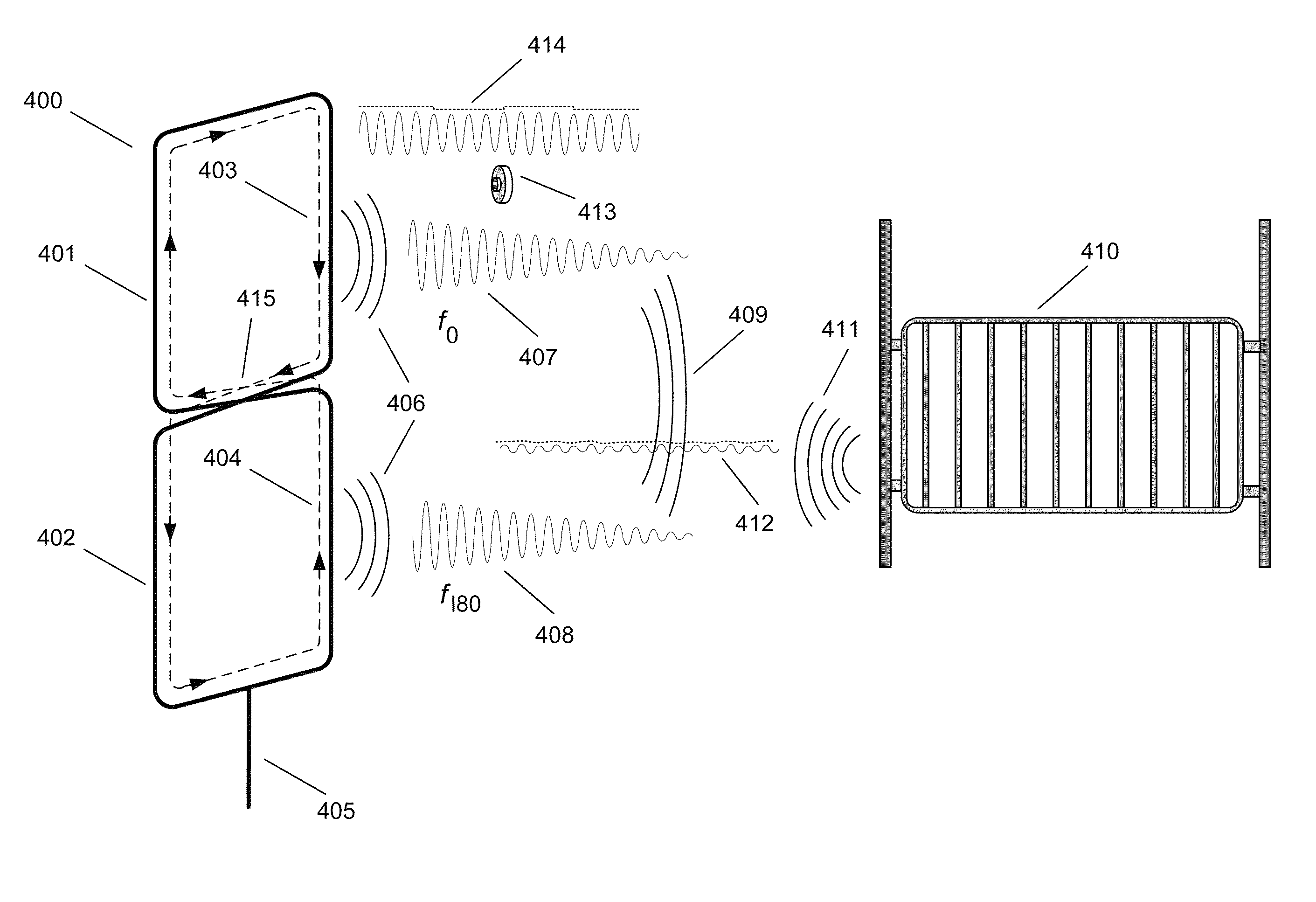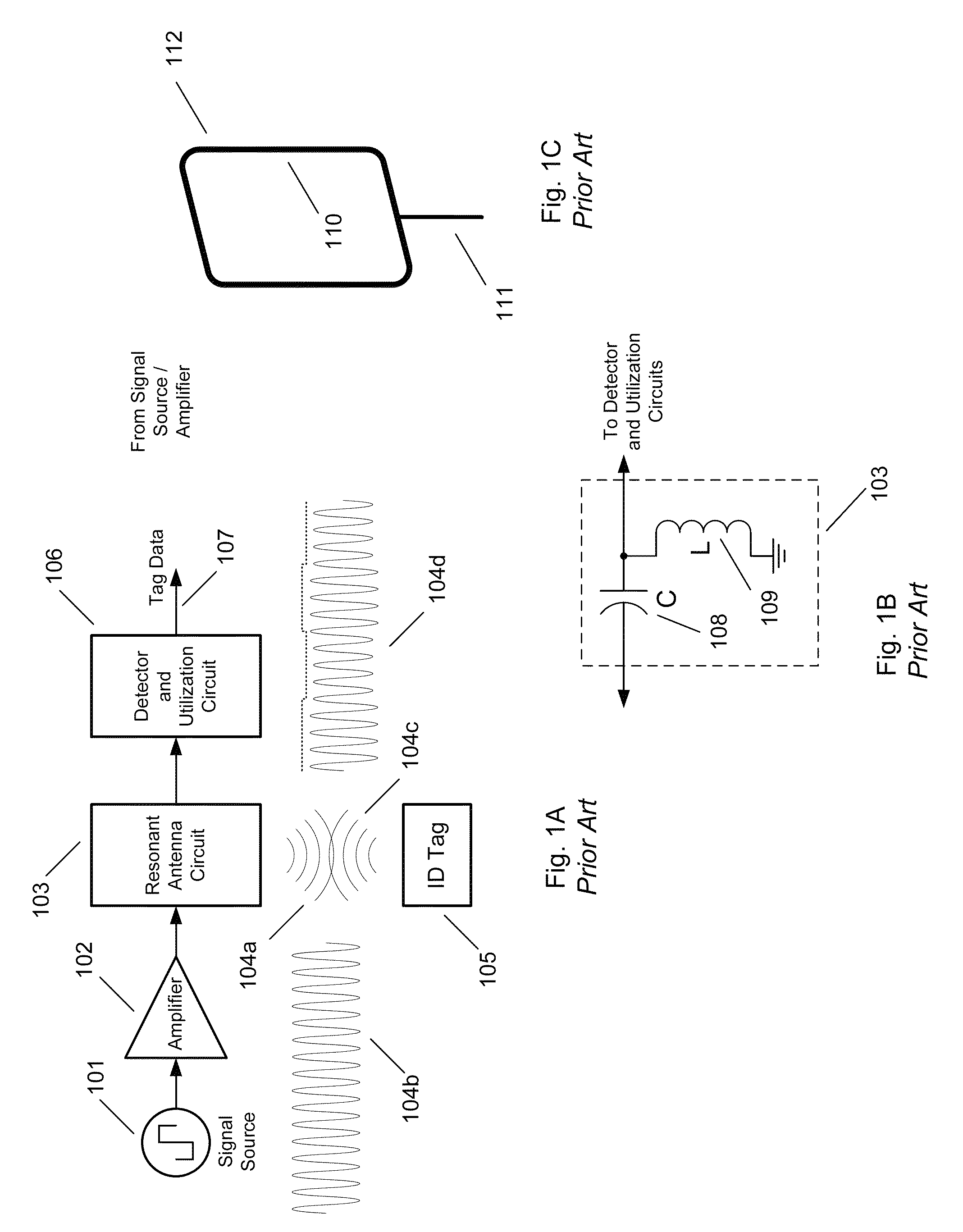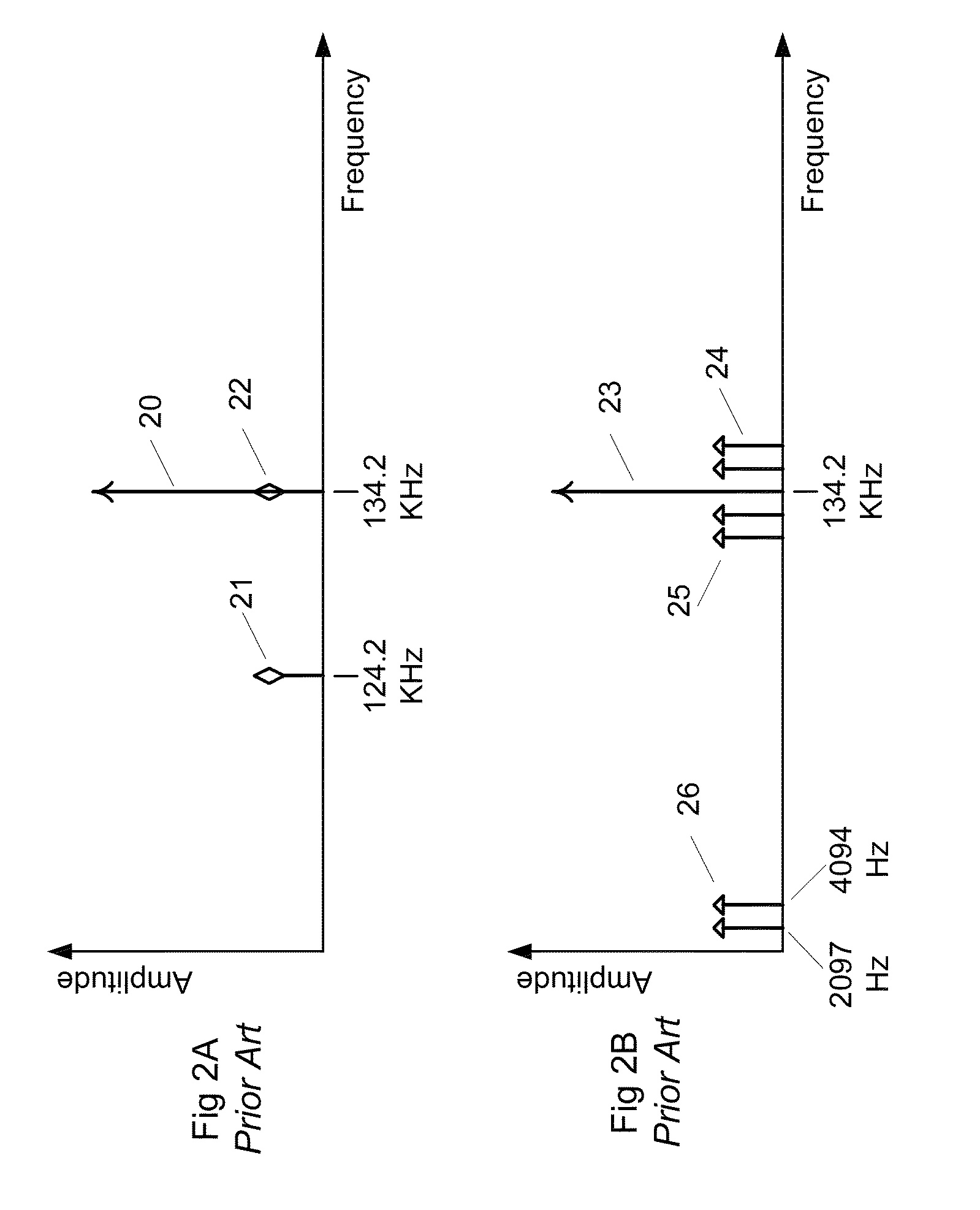Signal cancelling transmit/receive multi-loop antenna for a radio frequency identification reader
a radio frequency identification and transmit/receive technology, applied in the field of signal cancellation transmit/receive multi-loop antennas for radio frequency identification readers, can solve the problems of reducing the operating range of tags, affecting the efficacy of rfid systems, and affecting the sensitivity of readers, so as to maintain the sensitivity of close-by identification tags, minimize interference, and minimize reader sensitivity
- Summary
- Abstract
- Description
- Claims
- Application Information
AI Technical Summary
Benefits of technology
Problems solved by technology
Method used
Image
Examples
Embodiment Construction
[0058]Turning now to the drawings, RFID readers including multi-loop signal cancelling antennas configured to read RFID transponders and exclude electromagnetic noise related to the vibration of metal objects at acoustic frequencies in accordance with embodiments of the invention are illustrated. In many embodiments, the loops of the signal cancelling antenna generate magnetic fields that have instantaneous opposite polarity and effectively cancel when they merge a distance from the antenna. Antennas in accordance with embodiments of the invention are referred to as signal cancelling, as opposed to noise cancelling, because the antennas generate magnetic fields that effectively cancel the interrogation signal (i.e. the signal generated by the antenna) a distance from the antenna that is typically a small multiple of the largest dimension of the antenna. The effect of cancelling the interrogation signal beyond a certain distance from the antenna is to eliminate interference from acou...
PUM
 Login to View More
Login to View More Abstract
Description
Claims
Application Information
 Login to View More
Login to View More - R&D
- Intellectual Property
- Life Sciences
- Materials
- Tech Scout
- Unparalleled Data Quality
- Higher Quality Content
- 60% Fewer Hallucinations
Browse by: Latest US Patents, China's latest patents, Technical Efficacy Thesaurus, Application Domain, Technology Topic, Popular Technical Reports.
© 2025 PatSnap. All rights reserved.Legal|Privacy policy|Modern Slavery Act Transparency Statement|Sitemap|About US| Contact US: help@patsnap.com



